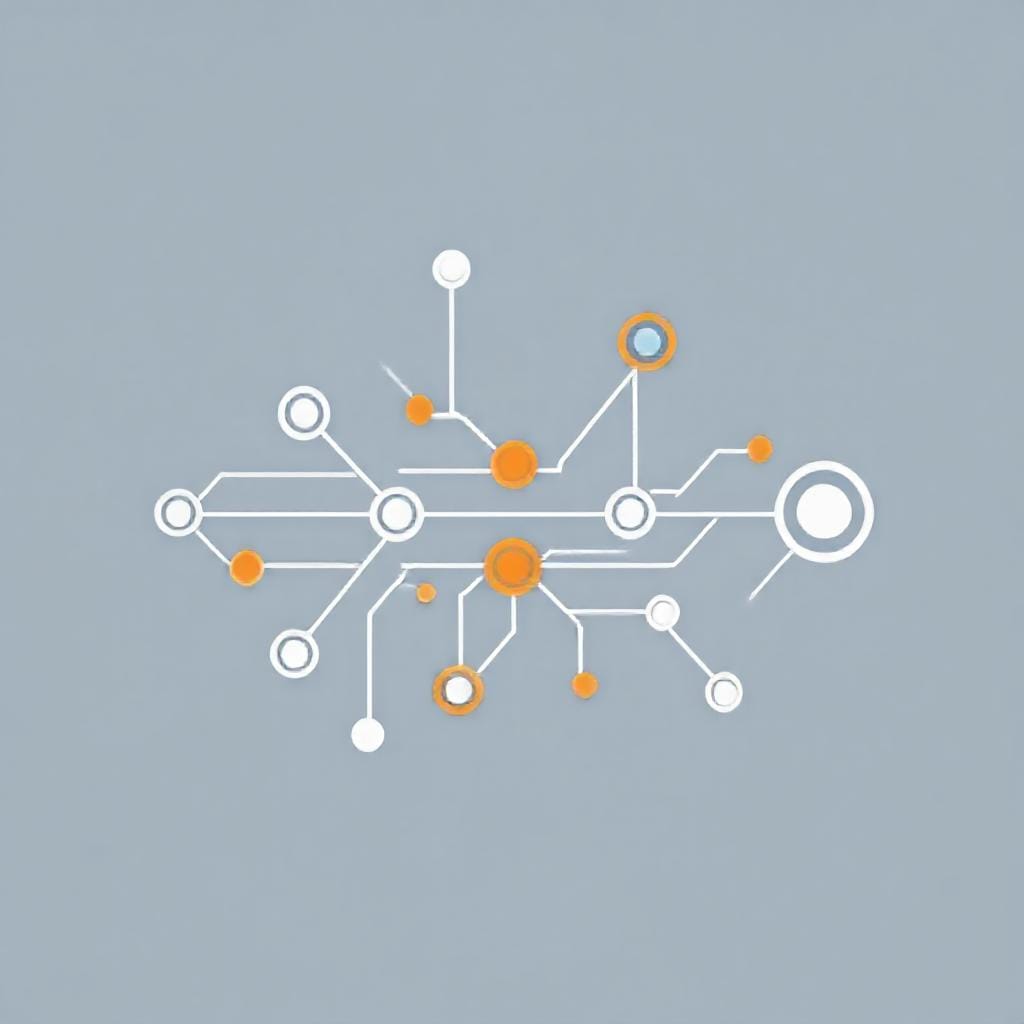Business vs. IT Projects: Why AI Doesn’t Follow Traditional Rules
When AI Meets Business: A Lesson in Expectations vs. Reality
Imagine this: You’re a startup founder, and you’ve just greenlit your first AI project. You’re excited. Your team assures you that in six months, you’ll have an AI-powered recommendation engine that will personalize customer experiences and skyrocket revenue. You nod, envisioning a smooth process—just like when you implemented a new CRM system last year. That project had clear milestones, a predictable timeline, and a structured rollout. But six months later, instead of a fully functional AI system, you’re looking at a half-built model that still needs fine-tuning.
The AI team is telling you they need more data, more testing, and more iterations. You’re frustrated. Why isn’t this working like a regular IT project? Welcome to the world of AI projects, where things don’t follow a straight path, and uncertainty is part of the process. If you’re a business owner or non-technical founder diving into AI, understanding how AI projects differ from traditional IT projects is critical. Otherwise, you’ll fall into the common trap of expecting rigid timelines and fixed deliverables—only to be met with delays and disappointment.
So let’s break it down:
✅ How traditional IT and AI projects differ
✅ Why AI projects are more experimental and require ongoing learning
✅ How to manage expectations and keep your AI project on track
1. Traditional IT Projects: Predictable and Linear
If you’ve ever implemented a website, ERP system, CRM, or mobile app, you’ve worked on an IT project. These projects follow a structured, step-by-step process:
🔹 Step 1: Define requirements You decide exactly what you need (e.g., “We need a CRM to track customer interactions”).
🔹 Step 2: Develop & implement The IT team builds the system according to specifications.
🔹 Step 3: Test & deploy Once built, the system is tested, refined, and launched. This approach works because traditional IT systems are rule-based—you define inputs and outputs upfront.
🚀 Example: Implementing an invoicing system. The system follows pre-programmed rules (e.g., “If payment is overdue, send a reminder”). It works exactly as expected, with minimal surprises. IT projects are predictable. AI projects? Not so much.
2. AI Projects: Unpredictable and Iterative
AI isn’t rule-based—it’s data-driven. Instead of following pre-set instructions, AI learns patterns from data. This makes AI projects fundamentally different from IT projects:
🔹 AI Requires Experimentation (You Can’t Predict the Final Outcome)
Unlike IT systems, AI models don’t just "work" after development. They need to be trained, tested, and refined—sometimes multiple times.
🚀 Example: Building an AI model to predict customer churn.
You train the model on past customer data. The first version of the model might be inaccurate—maybe it predicts churn correctly only 60% of the time. You tweak the model, test it again, and refine it further. This cycle repeats until the model reaches acceptable accuracy.
🔹 AI Needs High-Quality Data (Garbage In, Garbage Out)
For IT projects, you just install software and configure settings. For AI projects, your results depend entirely on your data. If your data is incomplete, biased, or outdated, your AI model will fail.
🚨 Common Mistake: Many companies assume AI will work out of the box, like an IT system. But AI models are only as good as the data they’re trained on.
🔹 AI Performance Improves Over Time (Not Immediately Perfect) Traditional IT systems are fully functional at launch. AI systems, however, get better over time as they process more data.
🚀 Example: AI fraud detection system.
Initially, it might miss fraud cases or trigger false alarms. Over time, it learns from mistakes and becomes more accurate. This means AI projects require continuous improvement, not a “one-and-done” approach.
The effectiveness of an AI model hinges on the quality and relevance of the data it's trained on. Incomplete or biased data can lead to unreliable outcomes.
3. Embracing the Iterative Nature of AI Projects
Managing an AI project requires flexibility and a departure from rigid timelines. The process typically involves:
✅ Define the Business Problem: Clearly articulate the issue you aim to address with AI. (e.g., "We want to predict which customers will leave").
✅ Collect and Prepare Data: Gather relevant data, ensuring its quality and completeness (garbage data = garbage AI).
✅ Develop an Initial Model: Create a preliminary AI model, understanding it may not be perfect initially.
✅ Test and Refine: Evaluate the model's performance, make necessary adjustments, and repeat the process (multiple iterations).
✅ Deploy and Monitor: Implement the model and continuously monitor its performance, making improvements as needed.
This cyclical approach acknowledges that AI development is an ongoing journey rather than a one-time project. This iterative cycle can take weeks or even months. And that’s normal.
Key takeaway: Instead of expecting immediate results, focus on continuous improvement.
4. How to Manage Expectations in AI Projectsstering Collaboration
Since AI projects don’t follow predictable timelines, how do you keep them on track?
✅ 1. Set Business Goals, Not Tech Goals Don’t start with, “We want AI.” Start with, “We want to reduce customer churn by 20%.”
📌 AI is a tool, not a solution. Always tie your AI project to a clear business objective.
✅ 2. Expect Multiple Iterations (And Plan for Them) Your AI model won’t be perfect on the first try. Instead of expecting one big final product, expect multiple improvements over time.
🔄 AI Project Timeline Reality Check:
❌ Wrong: “We’ll have a finished AI model in 3 months.”
✅ Right: “We’ll have a working prototype in 3 months, then refine it based on results.”
✅ 3. Align Business & AI Teams Early One of the biggest reasons AI projects fail? Poor communication between business and technical teams.
👨💼 Business leaders need to explain real-world goals.
👩💻 AI engineers need to ensure the AI model is actionable (not just a cool experiment).
🚀 Pro Tip: Have regular check-ins where data scientists translate AI insights into business terms.
5. Real-World Success: Enhancing Customer Experience with AI
Consider the case of Old Navy, which implemented an advanced tech system across 1,200 stores to enhance the in-store shopping experience. The new system, RADAR, leverages RFID, artificial intelligence, and computer vision to track inventory in real-time, helping employees quickly locate products and manage restocks efficiently.
This initiative aims to reduce empty shelves and improve service speed, aligning with Old Navy's strategic push in the retail sector. RADAR's deployment follows successful pilot tests and is expected to handle inventory with e-commerce-level precision. Additionally, AI-powered analytics will aid in loss prevention and overall stock management. This strategic use of AI led to a more efficient shopping experience, demonstrating the potential of AI when aligned with clear business objectives.
*) The US Sun
6. The Takeaway: AI is an Ongoing Journey, Not a One-Time Project
If you treat AI projects like traditional IT projects, you’ll be frustrated. AI doesn’t follow clear timelines, and results come gradually, not instantly. But if you embrace AI’s iterative nature, you’ll unlock massive value.
💡 Key takeaways:
✅ AI projects are experimental—expect multiple iterations.
✅ AI needs high-quality data—bad data = bad AI.
✅ AI models improve over time—don’t expect perfection on day one.
✅ AI success requires alignment between business & tech teams. In the end, AI isn’t about magic or hype—it’s about solving real business problems through smart data-driven decisions.
You can navigate the AI landscape effectively. Remember, the goal is not just to implement AI but to solve real business problems responsibly and ethically. As you embark on this journey, consider the broader implications of AI, including ethical considerations and the importance of using AI responsibly. And if you manage expectations correctly, your AI project won’t just succeed—it will transform your business. Engage with your peers, share this article and experiences to brainstorm, and continue the conversation on our social platforms to build a supportive community navigating the evolving world of AI together. 🚀
Sources:
- Old Navy's Implementation of AI Technology:
Download your free AI playbook now!
This isn’t a technical deep dive or a hype-filled promise—it’s a practical playbook designed for busy founders and creators who want to work smarter, automate the repetitive, and unlock more time for what truly matters.
Inside, you’ll discover:
✅ How AI can handle tasks that drain your energy—so you can focus on growth
✅ The real ways AI is already helping businesses scale faster and more affordably
✅ Simple, actionable steps to start leveraging AI today—no tech skills required
The best part? You’re not late. You’re early. The world is still adapting to AI, and those who start now will have the advantage.
🚀 Download your free AI Playbook now and take the first step toward working smarter!

The AI Advantage: 10 Game-Changing Ways AI Can Streamline Your Business & Boost Growth
From Burnout to Breakthrough:
How AI Helps You Work Smarter, Faster, and for Less Time & Money.
Latest in AInsight
Categories
Newsletter
>> 🚀 Join AInsighters – your go-to source for mastering AI! Get exclusive tools, strategies, and case studies to grow your business and boost productivity. Stay ahead and scale smarter. Sign up today and get a FREE AI Playbook!
Created with ©systeme.io
Copyright © AIsociate 2025

